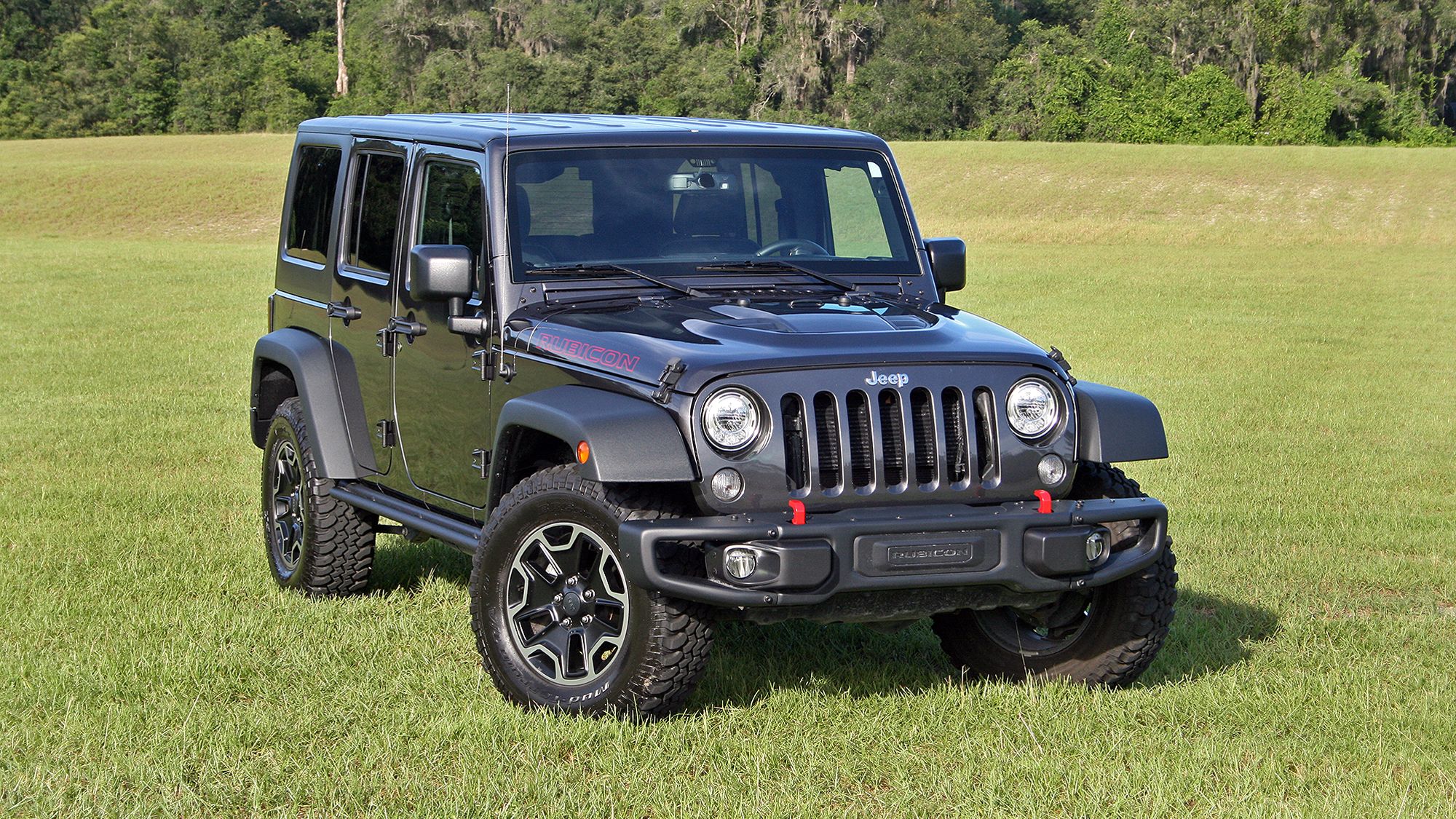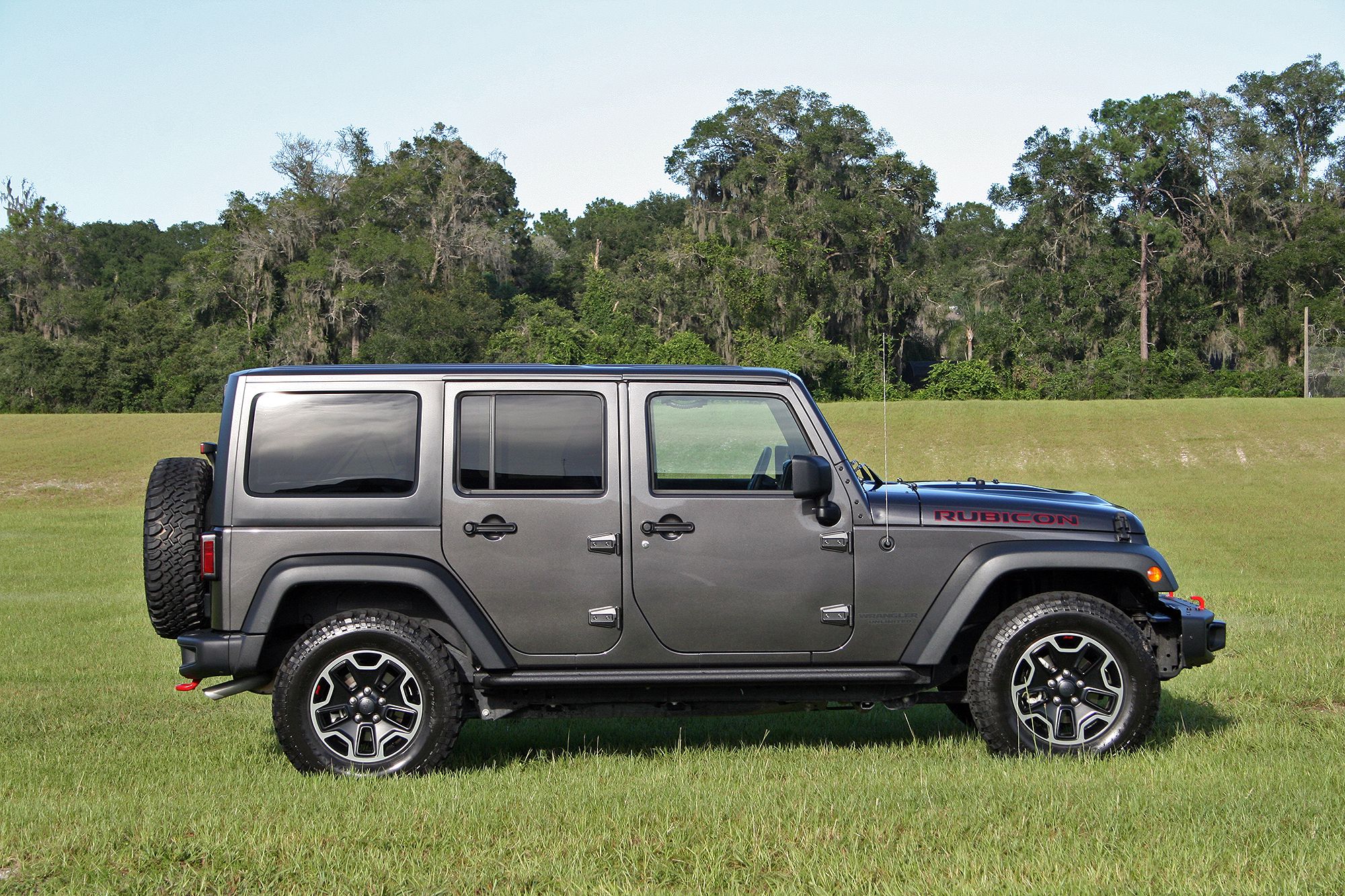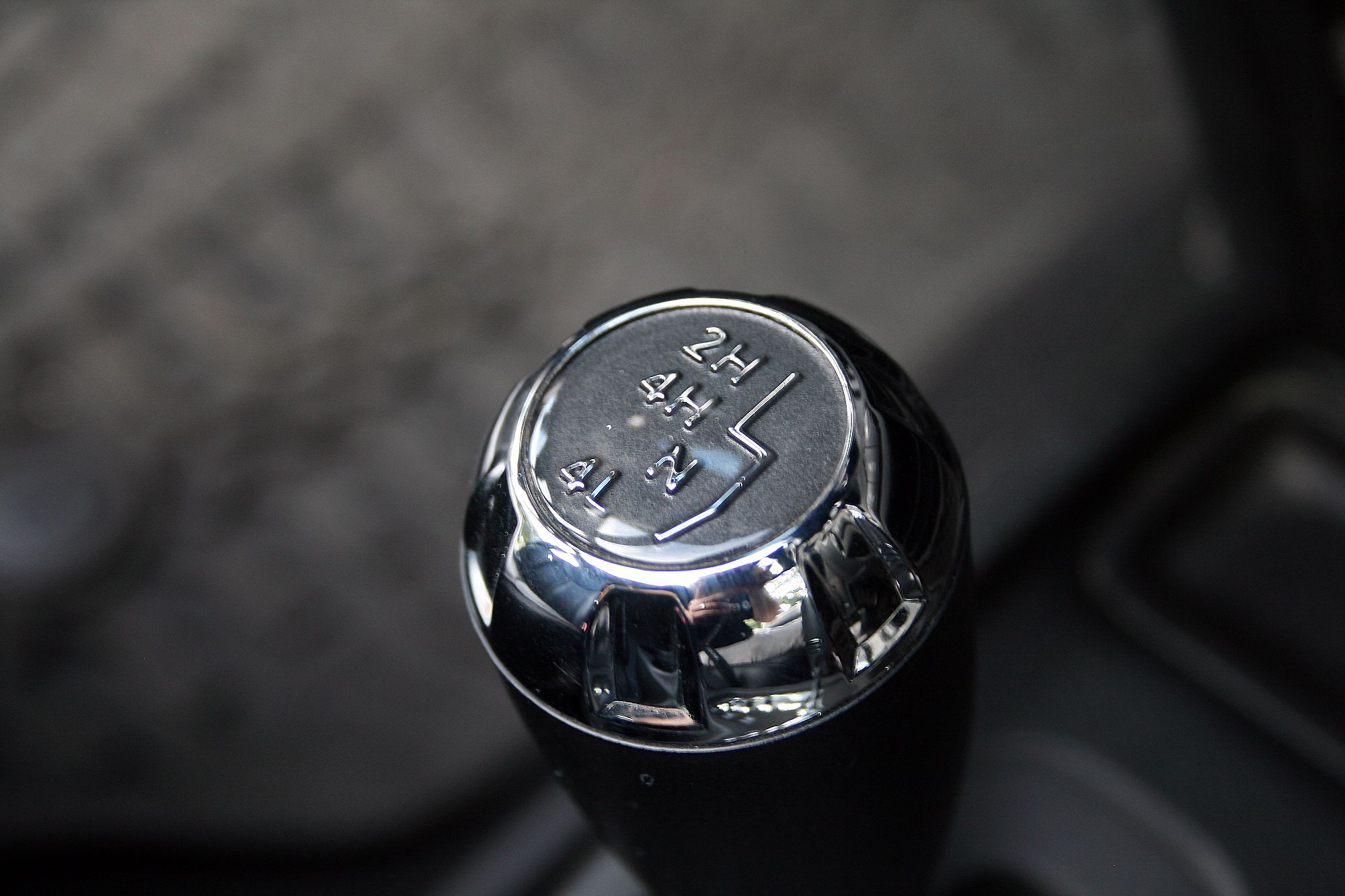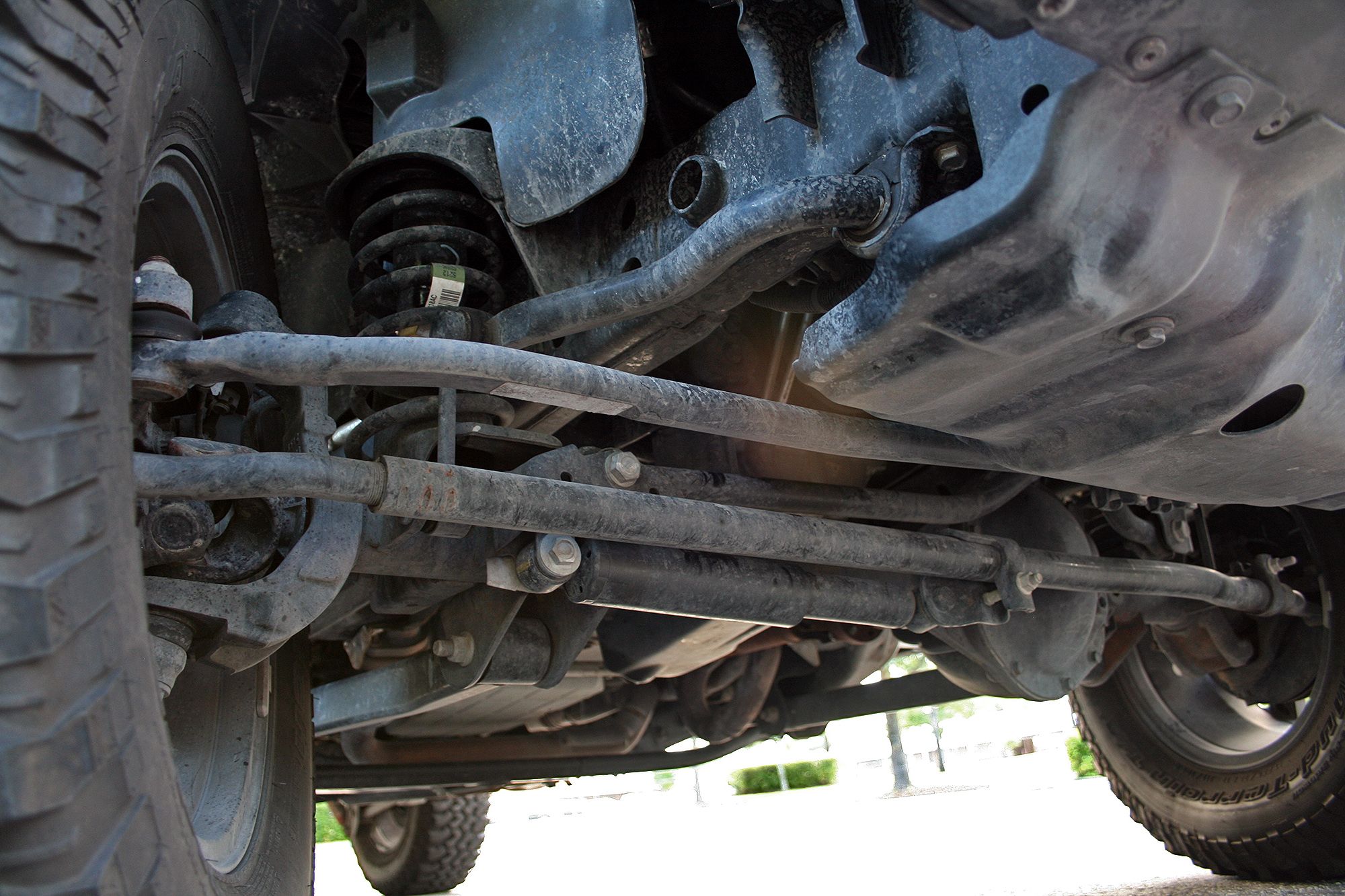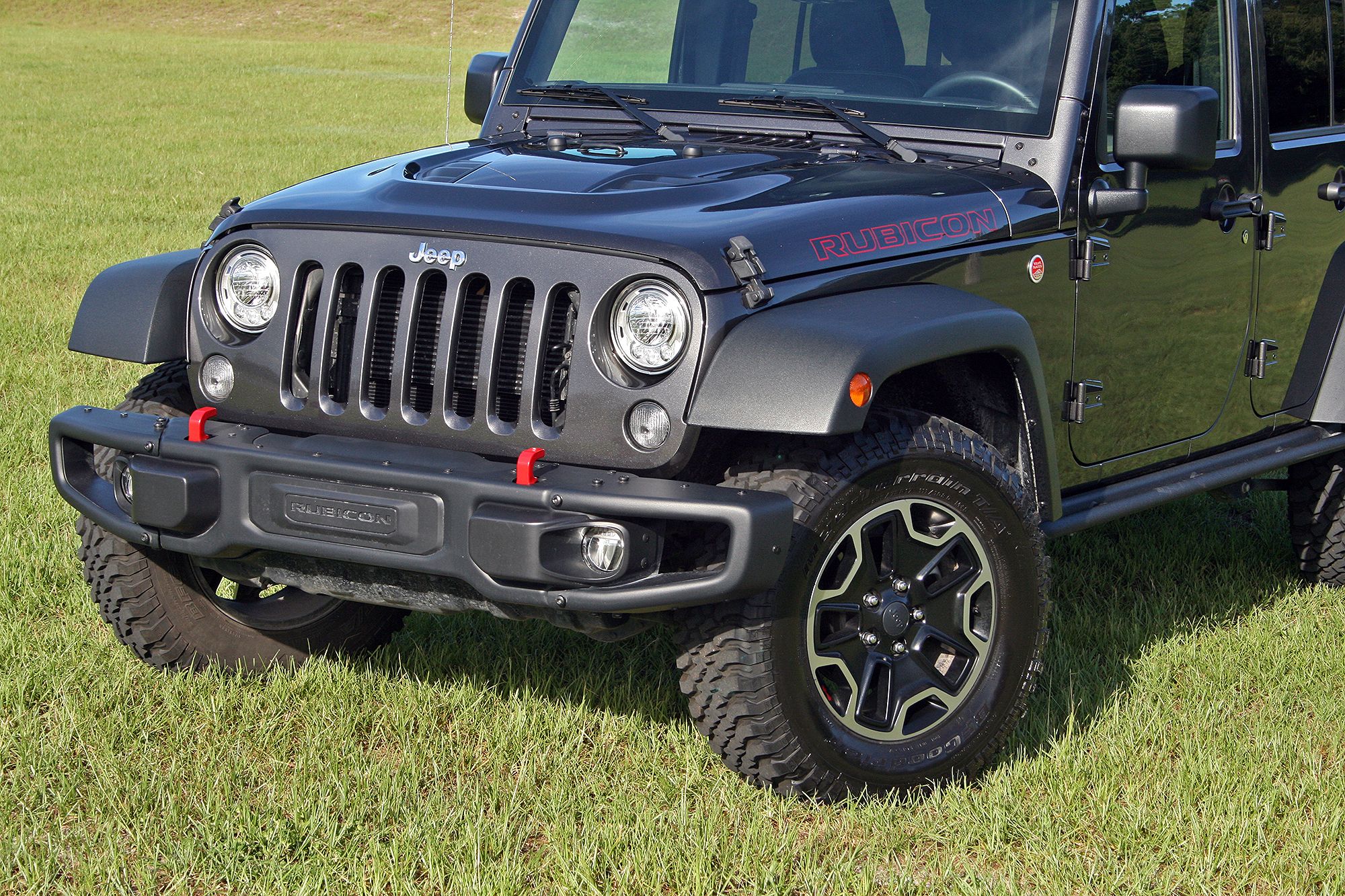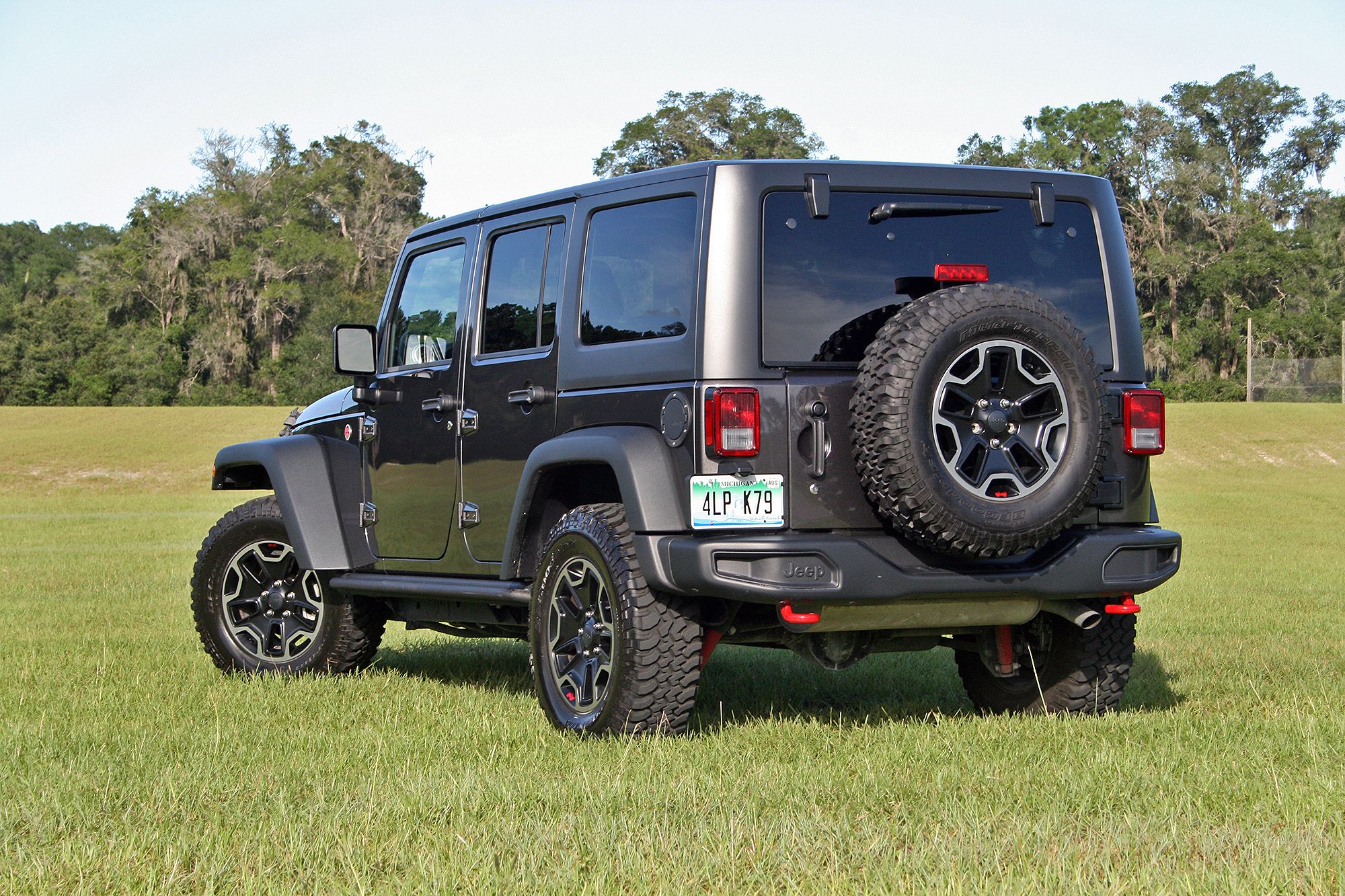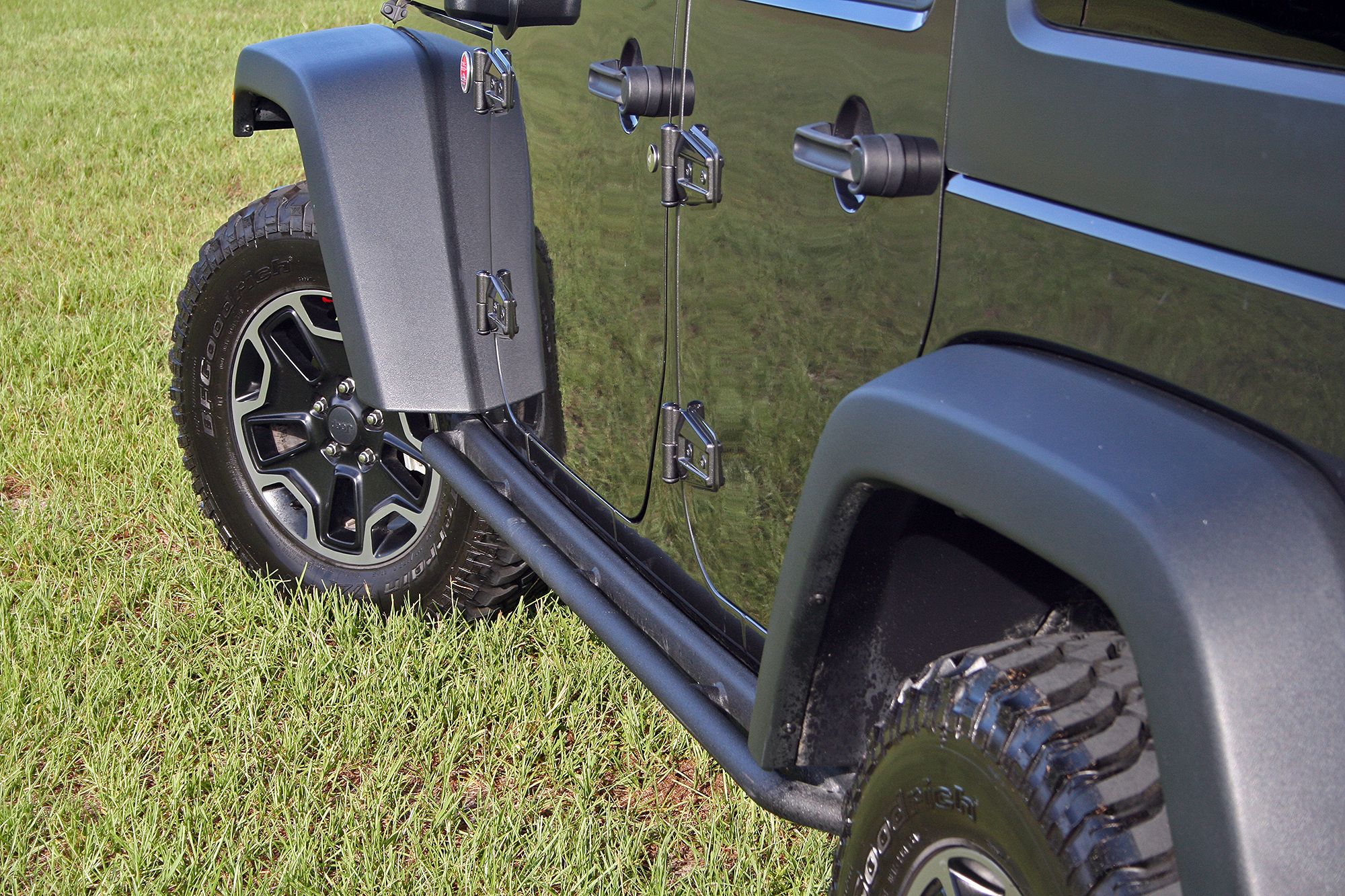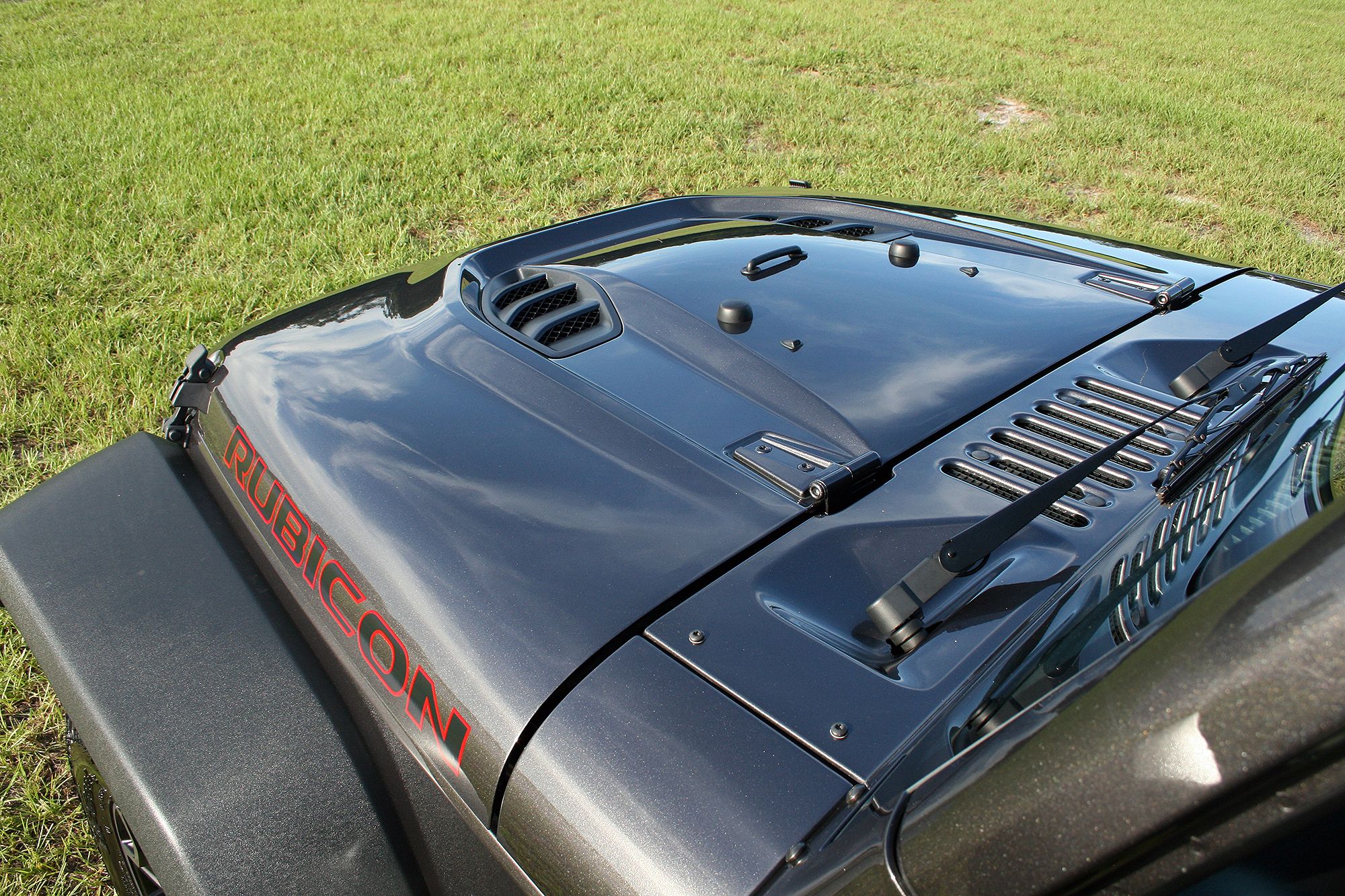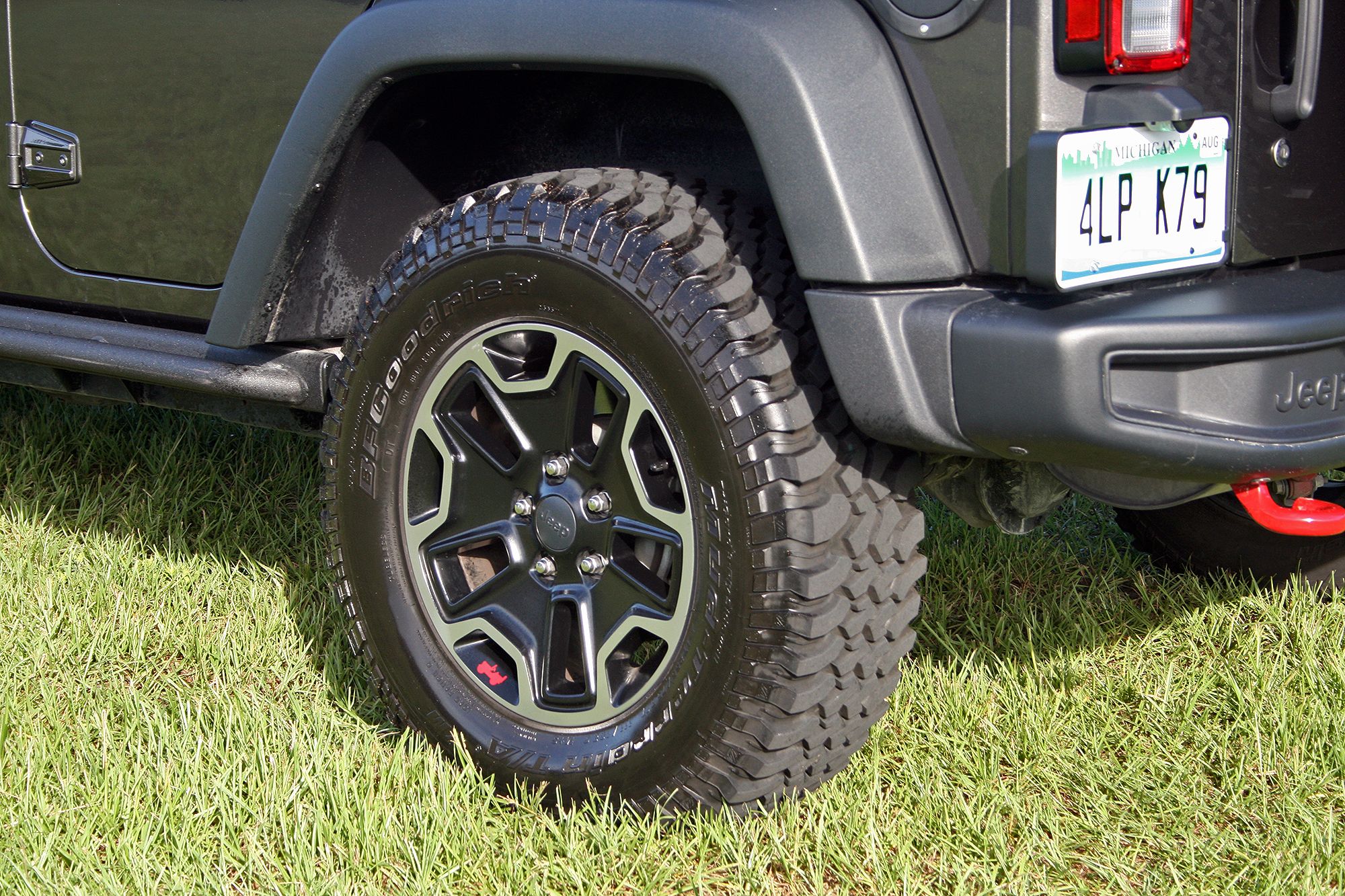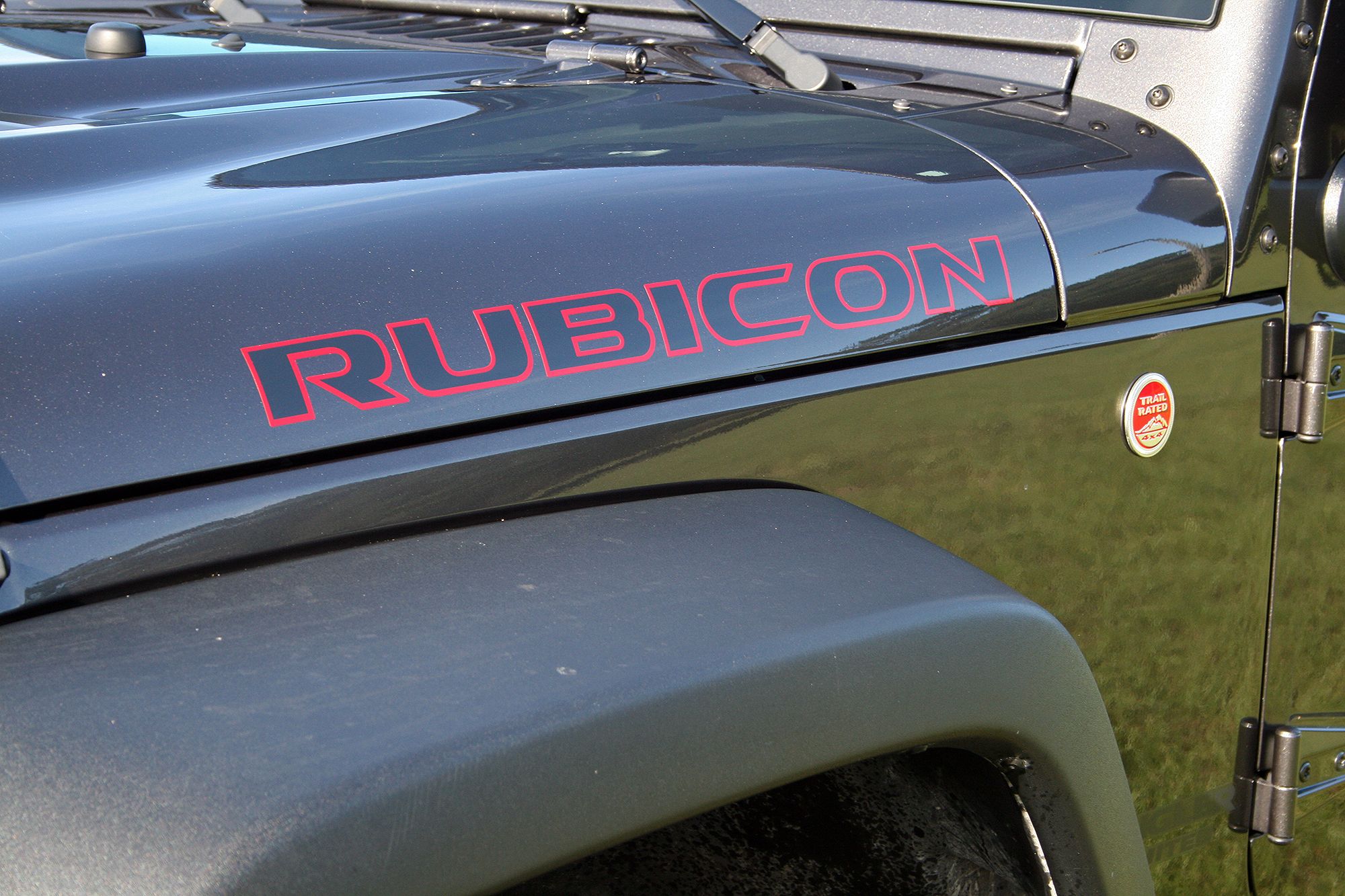This week has a 2017 Jeep Wrangler Unlimited Rubicon Hard Rock in my driveway. It’s a mouthful of a name, but its title is nothing compared to the laundry list of upgraded equipment bolted to this hard-core SUV. Things like rock rails, a heat-reduction hood, mud tires, and locking differentials just scratch the surface. As such, I wanted to take a deep dive into what constitutes a Rubicon trim – and the subsequent Hard Rock model – of the venerable Jeep Wrangler JK.
The current Jeep Wrangler, codenamed JK, has been around since 2007. The JK revolutionized the Wrangler with the addition of a four-door model called the Wrangler Unlimited. Since its introduction, the Wrangler JK has undergone minimal changes. An improved interior came for 2011 followed by the then-new 3.6-liter Pentastar V-6 in 2012. Beyond that, only special edition models have kept the Wrangler fresh. Of course, Jeep is selling plenty of JKs, so there’s not much need to change. In fact, the Wrangler’s best year was 2015 when 202,702 Wranglers found homes in the U.S. alone. Jeep also sold 20,880 JKs in Canada that year, along with thousands more in markets around the world. But the JK’s days are numbered. Jeep is rolling out an all-new Wrangler for 2018, codenamed the JL. However, that doesn’t discount the awesomeness that is the current Wrangler Rubicon Hard Rock. Keep reading to find out why.
Continue reading for more information.
What’s in a Name?
The Rubicon trim line has been around a while, debuting on the Jeep Wrangler TJ back in 2003. It’s named after the famed Rubicon Trail, a demanding 22-mile trail cut into the Sierra Nevada Mountains in northern California. Since its introduction, the Wrangler Rubicon has come with an upgraded 4WD transfer case, locking differentials, and more aggressive tires. Jeep says the Wrangler Rubicon is designed to traverse the Rubicon Trail right from the factory floor. Not surprisingly, that’s been proven time after time.
Jeep launched the Rubicon Hard Rock model for 2015 as an added special edition to the Wrangler’s already wide range of trims. The Hard Rock takes the Rubicon’s mechanical upgrades and slathers on upgraded body parts and a swankier interior with optional creature comforts made standard like the nine-speaker Alpine audio system, Connectivity Group, and black leather seats. So, we’ll start with parts shared between the Rubicon and the Rubicon Hard Rock, then move to what sets the Hard Rock apart.
2017 Jeep Wrangler Rubicon Components
Rock-Trac 4WD System
At the heart of the Jeep Wrangler Rubicon is its Rock-Trac, part-time 4WD system. This manually operated transfer case boasts a 4:1 Low-Range for exceptional low-speed torque multiplication. Compare that to the standard Wrangler’s Command-Trac transfer case’s 2.72:1 Low-Range gear ratio. Both T-cases do have 4WD High and Low gear ranges, along with a Neutral position handy for flat-towing and the RWD position for on-road driving.
Dana 44 Axles
In addition to the Rock-Trac transfer case, the Wrangler Rubicon gets beefy Dana 44 axles. These solid axles provide extra strength for rock crawling and running larger aftermarket tires. What’s more, the both the front and rear differentials have Jeep’s Tru-Lok electronic lockers. Once the T-case is engaged in 4WD Low, the rear differential can be locked. This binds both rear tires together, preventing them from turning at different speeds. The benefit when off-roading is zero slip between the tires, meaning if one wheel looses traction, the differential doesn’t send power to the path of least resistance, as common with a standard open differential. Once the rear differential is locked, the driver can then lock the front differential. With both differentials locked up, all four tires spin at the same speed, regardless of traction. The only downside is difficulty in turning since the outside wheel cannot turn faster than the inside wheel.
Electronic Sway Bar Disconnect
Jeep pioneered this advancement and later allowed Ram to use the technology on the Power Wagon. First off, the sway bar acts as a spring between the tires on an axle. During normal operation, the sway bars help minimize body roll in turns by leveraging this spring action against the centrifugal motion of the vehicle’s body. While great on the road, sway bars limit wheel and axle articulation and therefore limit wheel travel up and down.
The simple solution is simply disconnecting the sway bars. Traditionally, this meant crawling under the Jeep with a socket. However, the Rubicon’s front sway bar has an electronically controlled coupling that can be disengaged with a button from the comfort of the driver’s seat while on the move. This gives the Rubicon’s solid front axle 33 percent more travel in off-road environments. The computer-controlled actuator automatically re-engages the sway bar at speeds above 18 mph when the priority for wheel articulation is traded for vehicle stability.
Now for those Hard Rock parts
Winch-Capable Steel Front Bumper
This steel from bumper has been around a few years, but Jeep only uses it on “special” trims like the Hard Rock and Rubicon Recon. The bumper isn’t only stronger than the standard (and rather ugly) plastic bumper used on the Wrangler, it serves several beneficial purposes. First, the bumper’s steel end-caps are easily removable. Jeep even provides the Torx bits in a tool kit. Once removed, the shortened bumper allows better access to the front wheels for climbing taller obstacles. Second, the bumper includes a thick skid plate for added protection. This replaces the flimsy plastic “guard” on the standard Wrangler. Lastly, the bumper is fully capable of housing an recovery winch. Simply remove the front and top panels, purchase the mounting brackets from Mopar, and install the winch of your choice. And for an added touch, the tow hooks are painted red. Mopar also offers grille guard that mounts to the bumper.
Steel Rear Bumper
Out back, the Wrangler’s plastic bumper is traded for steel. The bumper has a unique shape, complete with the Jeep logo on the driver’s side. It also has a cut-out for Mopar’s optional frame-mounted spare tire carrier. The carrier has a higher weight rating than the tailgate-mounted tire carrier and accommodates larger spare tires. The Rubicon Hard Rock also gets an extra rear tow hook, giving the Jeep four recovery points. Of course, the hooks are painted red to match the front tow hooks.
Premium Off-Road Rock Rails
The standard Wrangler Rubicon comes with flush-mounted rock sliders. While functional, they don’t provide the level of body protection these extended rock sliders do. What’s more, these powder-coated rails can be stood on for reaching the roof or simply providing a leg up into the Jeep. On the trail, these rock sliders are strong enough to support the weight of the Wrangler while keeping rocks and tree stumps from smashing into the doors. This is especially critical on the long-wheelbase Wrangler Unlimited, though even two-door Rubicon Hard Rocks get the rock rails.
Power Dome Vented Hood
Aside from the front bumper, the vented hood is the quickest way to spot a Rubicon Hard Rock. Well, the hood is also used on other special edition Wranglers, including the Rubicon Recon, Chief, and 75th Anniversary. At least you’ll at least know the Wrangler isn’t a standard model. The hood isn’t only for looks, either. The functional vents help extract hot air from the engine bay. An interesting side effect I’ve noticed, too, is a reduction in hood flutter – a syndrome that plagues flat-hooded Jeeps as the hood slightly shakes up and down at higher speeds. Whether it’s the vents that alleviate under-hood air pressure or the extra rigidity provided by the stamped creases in the hood, the result is happily welcomed.
Wheels & Tires
The Rubicon Hard Rock uses the same wheel and tire package found on the standard Rubicon, though the wheels are painted “Polished Semi-Gloss Black” rather than the “Polished Mineral Gray” color. The “Icon” logo (the side profile of the Willys MB) moves from a dark gray to red, matching the Hard Rock’s other red accents. The wheels measure 17x7.5 and come wrapped in BFGoodrich Mud-Terrain T/A KM tires sized at LT255/75R, or 32 inches tall.
Conclusion
The 2017 Jeep Wrangler Unlimited Rubicon Hard Rock definitely has some rockin’ off-road parts matched with the Wrangler’s free-spirited, doors off, top down attitude that has made it so successful. The Hard Rock’s rugged look and adaptable steel bumpers don’t hurt, either. All told, the Rubicon Hard Rock is hard to beat when it comes to a factory off-roader.
While I can’t wait to see what Jeep has in store with the next-generation Wrangler JL due for 2018, the current Wrangler JK will go down as the Wrangler that brought Jeeping to the masses thanks to its available four-door Unlimited trim. Sure, most are probably limited to mall crawling, but sales are sales. Money in the bank lets Jeep build more exotic and capable models that excite enthusiast, just like the Rubicon Hard Rock.
What do you think of the Wrangler Rubicon Hard Rock? Would you buy it, or some other Wrangler model? Let us know in the comments below.
References
Read our full review of the 2017 Jeep Wrangler
Read our speculative review on the 2018 Jeep Wrangler

